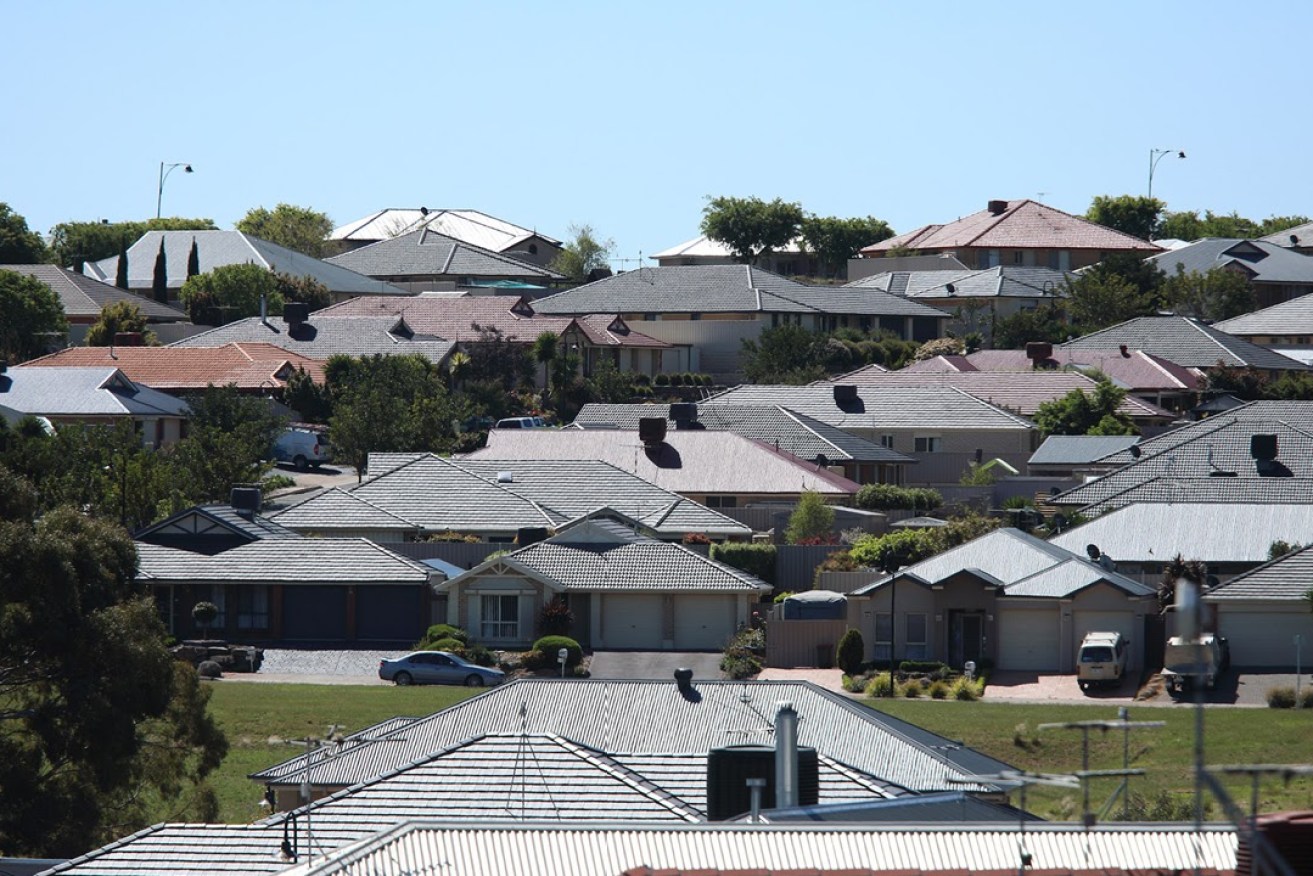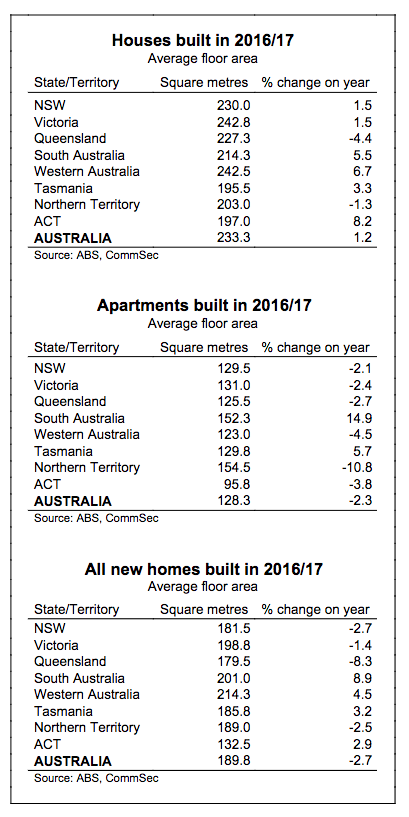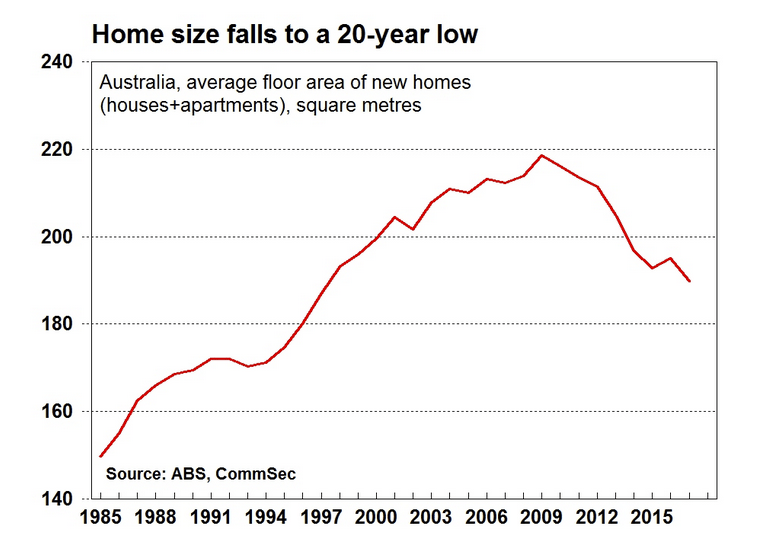Australian homes are shrinking – but not in SA
New homes built in South Australia in the past year were the second largest in the country, driven by a nation-leading increase in the size of apartments, according to a new analysis of housing data.

Photo: Tony Lewis/InDaily
The CommSec analysis, based on data produced for the bank by the Australian Bureau of Statistics, shows the average size of South Australian new homes – both free-standing and apartments – increased by nearly 9 per cent in 2016/17 to reach 201m² – second only to Western Australia (214.3m²).
The average size of freestanding houses in SA increased by 5.5 per cent to 214.3m². While this figure was behind WA, Victoria, NSW and Queensland, South Australians built the biggest apartments of all the states, with the average floor area increasing by 14.9 per cent to reach 152.3m², ahead of Victoria (131.0m²) and Tasmania (129.8m²). Only the Northern Territory built bigger apartments.
Taken together – freestanding homes and apartments – the average size of South Australia’s new homes was only a few square metres behind the United States, which recorded the highest global average home size in 2016 – 204.3m².
The report notes that South Australians have long favoured bigger homes.
“South Australia built the biggest homes on records going back 30 years,” it says.

The South Australian figures are at odds with the national data, which shows the size of the average new home in Australia has shrunk to a 20-year low as more people buy apartments.
At 233.3 square metres, the average freestanding house being built now is 30 per cent larger than 30 years ago and has double the number of bedrooms of 20 years ago.
Only houses in the US are bigger, at an average 245 square metres.
Despite the size of houses creeping up, fewer are being built as an increasing number of Australians choose apartment living over the suburbs.
CommSec chief economist Craig James says experience-hungry younger home buyers no longer want to invest their money in large houses requiring time-consuming upkeep.
“Gen Y and Millennials are saying “I don’t want to put a lot of money into a place where I’ve got to have the upkeep, where I’ve got to mow lawns”,” he said.
“What they’re more focused on is life more generally, they want to travel overseas, they want to go eat at cafes and restaurants”.
It’s not just lifestyle choices driving apartment demand, James says strong population growth due to migration, coupled with baby boomers downsizing and younger Australians taking advantage of lower interest rates has resulted in demand for affordable, smaller high-rise homes grow.
As more people live in high and medium density dwellings, the average new home size – across houses and apartments – has dropped to 189.8 square metres in 2016/17, down 2.7 per cent over the past year and the smallest since 1997.

Source: CommSec/ABS
“We’ve got greater consolidation occurring, there’s more units, apartments and semi-detached dwellings, with people wanting to live closer to capital city centres,” James said.
And the size of average new home may continue to drop further as older free-standing houses continue to make way for apartments across the country.
Seven years ago, just 27 per cent of homes built were apartments but today they account for 47 per cent of all new homes built.
Despite this the great Australian dream is far from endangered: the 2016 census found freestanding houses account for 72 per cent of all homes in Australia, with apartments, semi-detached houses and town houses making up just 26 per cent.
– with AAP




